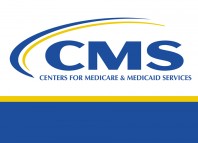Capitolwire: Proposed National Opioid Settlement Creates New Harrisburg Money Pot
By Robert Swift, Staff Writer, Capitolwire
HARRISBURG (July 26) – The proposed $26 billion national opioid legal settlement creates a new pot of money that could help shape state budgets for years to come.
Pennsylvania’s share of the settlement announced last week by State Attorney General Josh Shapiro is anticipated at $1 billion provided in payments over a number of years.
A key factor determining Pennsylvania’s share is how many local governments opt to participate in the settlement and drop their own opioid lawsuits.
The settlement with Johnson & Johnson, an opioid manufacturer, and three major opioid distributors – Cardinal, McKesson and AmerisourceBergen — is designed to resolve nearly 4,000 lawsuits filed by states and local governments responding to a wave of opioid overdose deaths and addictions across the nation.
The settlement also requires the four firms to take a number of steps to prevent a future opioid crisis.
“This settlement puts in place controls that will go a long way to make sure that this never happens again, and the money that will come to Pennsylvania will help offer and expand life-saving treatment options across our Commonwealth,” said Shapiro.
Earlier this month, Shapiro announced a $4.5 billion multi-state settlement with OxyContin manufacturer Purdue Pharma to settle lawsuits. Pennsylvania’s share from this settlement is $225 million.
The opioid settlements come two decades after Pennsylvania and a number of states reached a settlement with the tobacco industry to address the public costs of chronic health issues caused by smoking.
The new state Fiscal Code (House Bill 1348) establishes the Opioid Settlement Restricted Account from which deposited settlement money will be distributed through legislation. This account is under the state treasurer’s office.
Shapiro said a substantial amount of the second settlement money would be spent on opioid treatment and prevention.
The dollar share for each participating state is determined by a formula that includes the number of overdose deaths, number of residents with a substance abuse disorder, quantity of opioids delivered and population.
Pennsylvania reported 5,172 overdose deaths last year as the COVID-19 pandemic started.
Pennsylvania plans to sign the agreement while local governments have up to five months to sign. Pennsylvania will get its maximum share provided full participation by local governments.
The state/local distribution will depend upon an intrastate allocation agreement.
“The Wolf Administration commends the work of the Attorney General in reaching this historic settlement,” said Gov. Tom Wolf’s spokeswoman Lyndsay Kensinger. “We hope that states and localities will opt into the settlement so that Pennsylvania can maximize the benefits and direct new resources into mitigating the continuing damaging effects of the opioid epidemic here in the commonwealth.”
The Republican caucuses that control the General Assembly already have some ideas for targeting the money.
“The caucus leaders of the House and Senate are working with the Attorney General to determine next steps and how to best appropriate the nearly $1 billion in funds allocated to Pennsylvania as part of the opioid settlement…” said Erica Clayton Wright, spokeswoman for Senate Majority Leader Kim Ward, R-Westmoreland. “Based on that agreement, we will identify ways the funds can be used for state and local governments to put measures in place to help prevent such a crisis from happening again while also offering treatment options to communities currently effected by the crisis.”
The settlement is drawing pushback from some local officials.
Philadelphia District Attorney Larry Krasner quickly sued Shapiro’s office over the settlement saying the money coming to Philadelphia would be too little to address the costs and the payments too slow.
A Cambria County lawmaker said his county should receive a fair share from the settlement since it’s among the hardest hit by overdoses and pill dumping.
“We know all too well the damage these pills have done – everyone in our areas has been affected in one way or the other,” said Rep. Frank Burns, D-Cambria. “If we’re stuck dealing with the problem, when the settlement comes, we should be getting the bulk of that money to correct the devastation caused by the influx of these pills to our community.”
Cambria is regularly listed in the top five counties in per capita overdose deaths while a 2018 study found Cambria the most saturated county with shipments of opioid painkiller pills, said Burns.
The story with the state Tobacco Settlement Fund could offer clues to how the Opioid Settlement Fund would work.
The multi-state tobacco settlement was reached in 1998 with a main goal of reducing smoking, especially among youth. The settlement placed no requirements or restrictions on how state spend their annual tobacco payments, according to an analysis by the House Democratic Appropriations Committee.
Three years later, the tobacco fund was created under Act 77 of 2001 after lawmakers debated various spending proposals.
The state budget typically sets percentages for distribution of some $350 million in annual tobacco money to a range of programs.
Since 2001, there have been appropriations for such programs as tobacco use prevention and cessation, aid to hospitals, health research grants and Medical Assistance for Workers with Disabilities and aid to help biotechnology programs to name a few.
The state budget for Fiscal Year 2017/18 authorized borrowing against $1.5 billion in future tobacco payments to help balance the budget.
In 2018, Shapiro announcement a settlement with tobacco firms to resolve two decades of disputes relating to the original settlement. This provided a cash infusion to the fund.
The new state fiscal code creates some new beneficiaries for tobacco funds, including spinal cord injury research, pediatric cancer research and capital and equipment grants to entities engaging in biotechnology research.
-30-
If you have any questions, please contact Jack Phillips, Director of Government Affairs.










